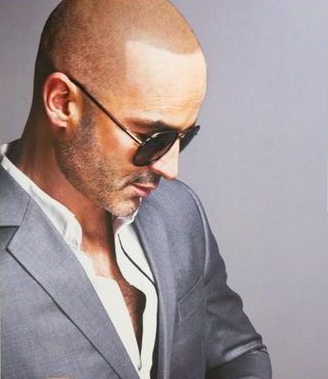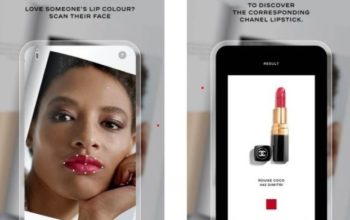Hair Tattoos offer a new solution for male hair loss and an alternative to surgery.

The following written content from Nick Pope
Esquire investigates one of the most popular alternatives to expensive surgery: Scalp Micropigmentation
On a cold morning in a quiet trading estate near Accrington, Joseph Lanzante places a bendy ruler on a bald man’s head and, with a white pen, carefully marks where his client’s hairline used to be. It’s two weeks before lockdown, and the only PPE in the room is the bin-liner aprons worn by two watching trainees. “You’ve got to get the lines right,” he warns, dipping his bandage-wrapped tattoo gun in a pot of black ink and poking at the tension in the air, “because the rest is just filling in.”
For more than three years, barbers and beauticians from across the country have traveled to the Joseph Lanzante Training School to learn scalp micropigmentation (SMP): the process of tattooing tiny dots on the head to create the illusion of stubble. Today, three men – one bald, one balding and one boldly holding on after three hair transplants – are set to be worked on by the teacher and his students. related story The Complicated History of Dreadlocks
Scalp micropigmentation is but one fast-growing branch of the booming male hair loss industry, which is set to be worth well over $45 billion worldwide by 2025. According to the International Society of Hair Restoration Surgery, a non-profit medical association of more than 800 hair restoration doctors, the number of men paying for hair transplants – the most expensive and invasive of the male pattern baldness treatments – rose 60 percent from 2014 to 2016.
Others have flocked to hair loss start-ups like Hims and Keeps, which have imbued hair-growth supplements with a previously lacking sense of cool courtesy of Instagram-savvy ad campaigns (sample strap-line: “handsome – is no longer genetic”). Meanwhile, 3D microfibres, which are combed through thinning strands to create density, continue to rise in popularity. Then there’s the surprising re-emergence of male wigs.ADVERTISEMENT – CONTINUE READING BELOW
Which all might have you wondering: why now? Is SMP really the answer to male pattern baldness? And why do we need one in the first place?
“Let me tell you, don’t go to a therapist – go to a barber. They’re cheaper.”
Lanzante is leading me around his long white-walled studio, past black leather barber chairs and bird’s-eye portraits of dotted scalps. “On Saturday my first three customers had split up with their wives,” he continues. “One guy wore a baseball cap his whole life. I should get paid extra.” As a veteran barber and balding man, the 61-year-old has an intimate understanding of how confidence-sapping hair loss can be – and how potentially lucrative its cure.

Lanzante is always on the look-out for a new business venture. He claims to have spearheaded no-reservation salons and beard grooming services in the UK, the financial success of which left him walking around like a “dog with two dicks”. Five years ago, while on a research trip to America, he discovered that hairdressers across New York were practising scalp pigmentation. He knew he needed to get some SMP training for himself.
The problem was, the only teachers available were beauticians, who were mainly experienced in microblading eyebrows and lips to look fuller. They didn’t understand male hairlines or fading techniques. Spotting a unique opportunity, he launched his own course and service in 2017. “Nobody in the [British] barbering world or on Facebook knew about micropigmentation until I put it out there,” he says.
A full scalp procedure plays out like this: the SMP artist will mix black ink and water to create one of 32 different follicle shades. Then they plot out your hair line (“Get that wrong and it’s game over,” says Lanzante) and implant micro-dotted ink patterns into the scalp with an ultra-thin needle, to give the appearance of shaved hair follicles.
During two three-hour follow-up sessions, they add density and fix any problems. In total it costs up to £3,000 and should last for around two years before it begins to fade. The procedure is particularly popular amongst those with visible scarring, as well as alopecia sufferers and people undergoing chemotherapy. Lanzante tells me about a recent client with cancer who burst out crying after seeing the results. Read more from Esquire





